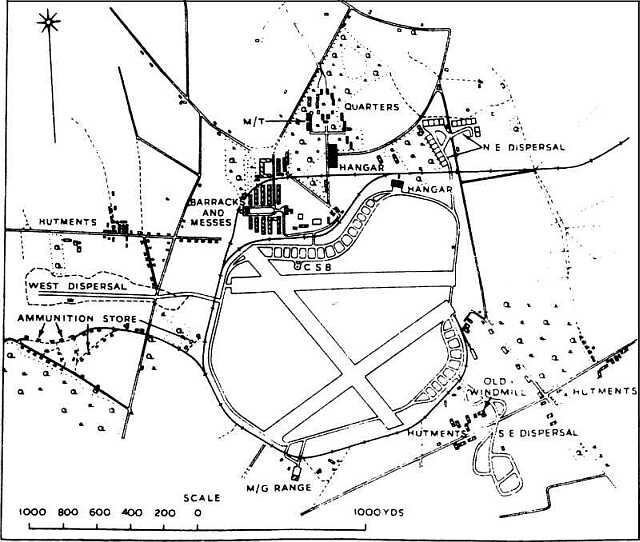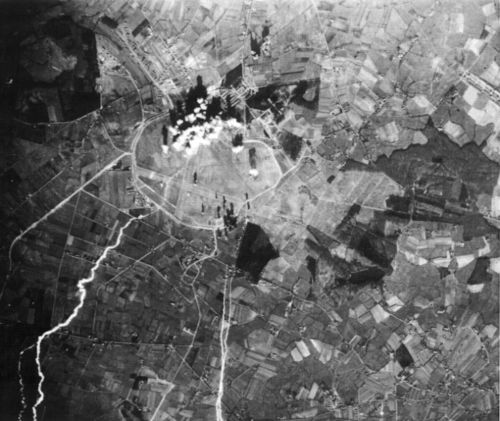 Varel
Varel
Validation date: 20 12 2010
Updated on: 12 10 2014
Views: 4717
See on the interactive map:
53°22'23"N 008°02'41"E
Runway: n/a - 1200x80meters/...feet - concrete
Runway: n/a - 1200x80meters/...feet - concrete
Runway: n/a - 1200x80meters/...feet - concrete
Airfield Varel (German: Einsatzhafen Varel, also known as Varel_Friedrichsfeld) was an airfield 370 kilometers west-northwest of Berlin.
It served as a Luftwaffe airbase during World War II. Construction of the airfield began in 1936, using forced labour, prisoners and POWs. The construction of the buildings was simple and straightforward. Its three runways were hardened and laid out in the familiar triangle shape which can be found all over Germany. It had a connection to the railway system and, remarkably, only one hangar. To the west of the airfield a munitions complex was constructed and the aircraft parkings were to the west, northeast and southeast.
At the beginning of the war Varel was home to Attack Wing (german: Zerstörergeschwader) 26 "Horst Wessel", flying Bf110 fighter-bombers.
Over time it became home to several bomber units and to groups of Zerstörergeschwader 30 "Adler", flying Junkers88.
The airfield was severely damaged after an air strike by Allied bombers on 24 March 1945.
Allied map of Varel (487BG.org)
Airstrike at Varel by the 487 BG (487BG.org)
After the war Danish troops blew up most of the airbase and its facilities. The barracks, built by forced labour, however were used to house displaced persons and as it already had schools and a kindergarten it was very suitable for the task. Once the displaced people left the barracks it lay unused until the 1960s.
In 1964 the German Army took over the entire complex. From 1964 until 1971 it was home to SAM battallion 24 which stationed a Nike Hercules system at the former airfield. For a short while it also housed SAM battalion 30 with HAWKs. Later it became a mobilisation complex and an exercise ground for the Varel garrisson. 
Einsatzhafen Varel in 2009 (Google Earth) showing runways in red, aircraft parking in green, and taxiways in blue.
The baracks are still in use and in good condition, and so are some period buildings at the munitions complex, but the airfield infrastructure has completely disappeared.